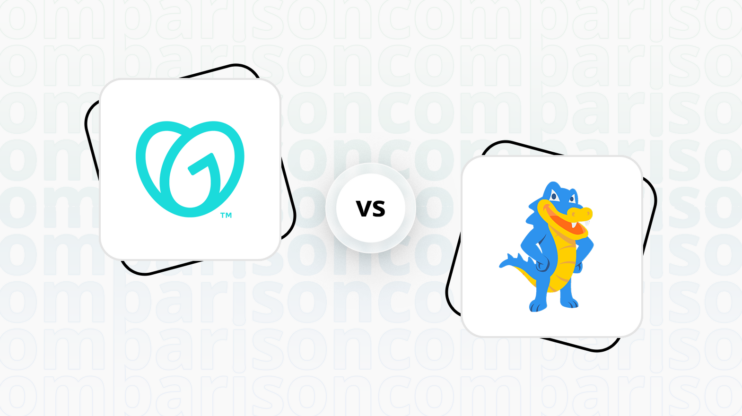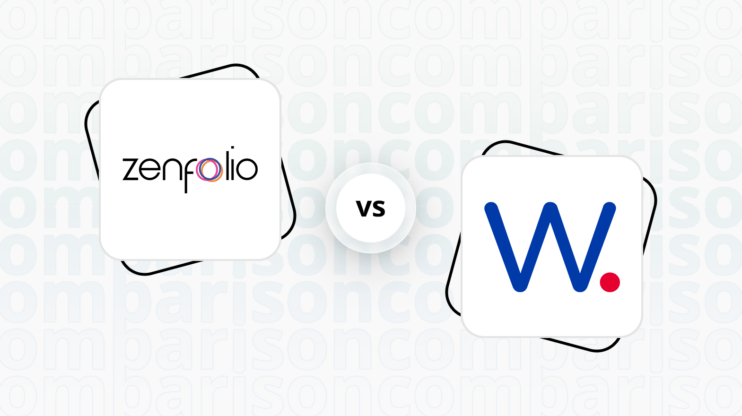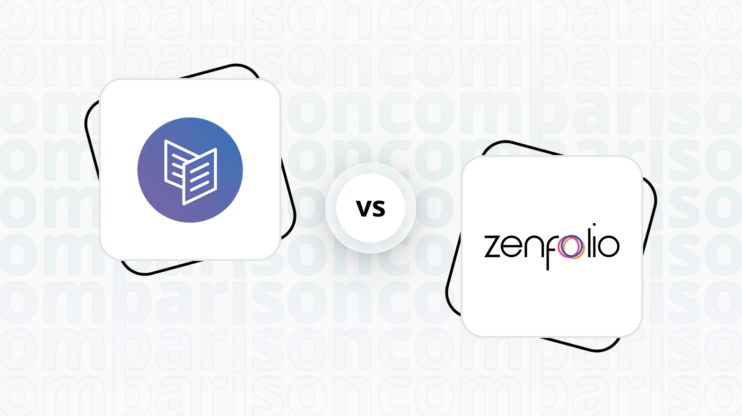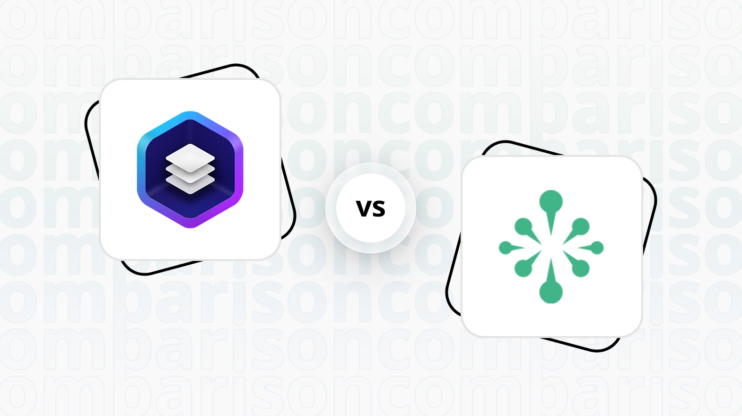Webflow vs Jimdo: Final verdict
Webflow and Jimdo both offer unique strengths, catering to different user needs and preferences.
-
Webflow (Overall Grade: 7.9/10)
is a powerful platform designed for professional designers and developers. It excels in providing advanced design functionalities, flexible CMS, and top-tier hosting services. Webflow is ideal for users who seek extensive customization options and are comfortable with a steeper learning curve. When comparing Webflow vs Jimdo, Webflow stands out for its robust design tools and comprehensive ecommerce features, making it a preferred choice for creating custom, responsive websites. -
Jimdo (Overall Grade: 7.2/10)
is known for its simplicity and ease of use, making it an excellent choice for beginners and small businesses. Jimdo’s AI-driven website builder, Jimdo Dolphin, simplifies the design process, allowing users to create professional-looking websites quickly. In the Webflow vs Jimdo comparison, Jimdo is more suitable for users with basic computer skills or limited time, offering a user-friendly interface and essential ecommerce features without the need for coding.

|

|
|
|---|---|---|
|
Design functionalities & templates |
8.6 |
7.2 |
|
Ease of use |
7.5 |
8.0 |
|
Ecommerce |
8.5 |
7.0 |
|
Website Editors |
9.0 |
7.8 |
|
Product testing options |
6.3 |
6.4 |
|
Price |
8.0 |
7.5 |
|
Hosting quality |
8.9 |
6.7 |
|
Website speed optimization |
8.1 |
7.6 |
|
Plugins and integrations |
5.5 |
7.4 |
|
Marketing features |
7.8 |
7.2 |
|
Customer support |
8.3 |
6.8 |
|
Security |
7.8 |
8.3 |
|
AI capabilities |
8.3 |
6.0 |
|
User Management |
8.3 |
5.8 |
Which one is the best for ecommerce: Webflow or Jimdo?
 8.5
8.5
 7.0
7.0
Verdict
: Jimdo is excellent for simplicity and ease of use, while Webflow excels in advanced customization and comprehensive ecommerce features.
-
Webflow
: Known for its powerful design tools and flexible CMS, Webflow is ideal for businesses looking for extensive customization and advanced ecommerce functionalities. It supports a wide range of ecommerce features, making it suitable for professional designers and growing businesses. However, when comparing Webflow vs Jimdo, Webflow might be more complex for beginners due to its advanced capabilities. -
Jimdo
: Its user-friendly interface is perfect for those with basic computer skills or limited time. The platform offers built-in ecommerce features that simplify the process of launching an online store. However, it may fall short for businesses needing extensive customization and advanced ecommerce tools.
Which one is the best for informational and business websites?
 8.6
8.6
 7.4
7.4
Verdict
: When it comes to creating informational business websites, Webflow stands out with its powerful design tools and flexible CMS, making it ideal for professional designers and businesses seeking a high level of customization. Jimdo, while user-friendly and suitable for beginners, doesn’t offer the same level of design flexibility and advanced features as Webflow.
-
Webflow
: Webflow scores 8.6 in this category, making it a top choice for informational business websites. It offers a comprehensive solution with its responsive website builder, CMS, and hosting platform. Webflow’s powerful design tools and flexible CMS allow users to create custom, responsive websites without extensive coding knowledge. This makes it a preferred choice for professional designers and businesses looking for a high level of customization and control over their website’s design and functionality. -
Jimdo
: Jimdo scores 7.4, making it a solid option for those who prioritize ease of use and simplicity. Jimdo is designed for a wide range of users, from individuals creating personal blogs or portfolios to small businesses and ecommerce entrepreneurs. Its AI-driven website builder, Jimdo Dolphin, simplifies the design process, making it particularly beneficial for beginners. However, it lacks the advanced design features and flexibility offered by Webflow, making it less suitable for businesses seeking a highly customized website.
Webflow vs Jimdo: Detailed comparison
Design functionalities & templates
Design FunctionalitiesRepresents how well each platform allows for creative design and customization of websites.Score Components:
- Template Variety (30%): Range and quality of design templates.
- Customization (30%): Flexibility and options for design alterations.
- User Interface (20%): Ease and intuitiveness of the design process.
- Responsiveness (10%): Adaptability to different devices and screen sizes.
- Innovation (10%): Unique design features and tools.
 8.6
8.6
 7.2
7.2
🏆
Winner: Webflow.
If you’re looking for a platform that offers more creative control, a wide array of design features, and a higher Design Functionalities Templates score, Webflow is the preferred choice.
Webflow delivers a robust design experience with a diverse range of template and customization options. Boasting over 1000 pre-built templates covering various industries and website types, including free and premium options, Webflow ensures a constantly evolving library for users. The design customization features include a visual drag-and-drop editor for real-time adjustments, fine-grained control over every aspect of the design, and the ability to inject custom code for advanced users seeking additional personalization and unique functionalities.
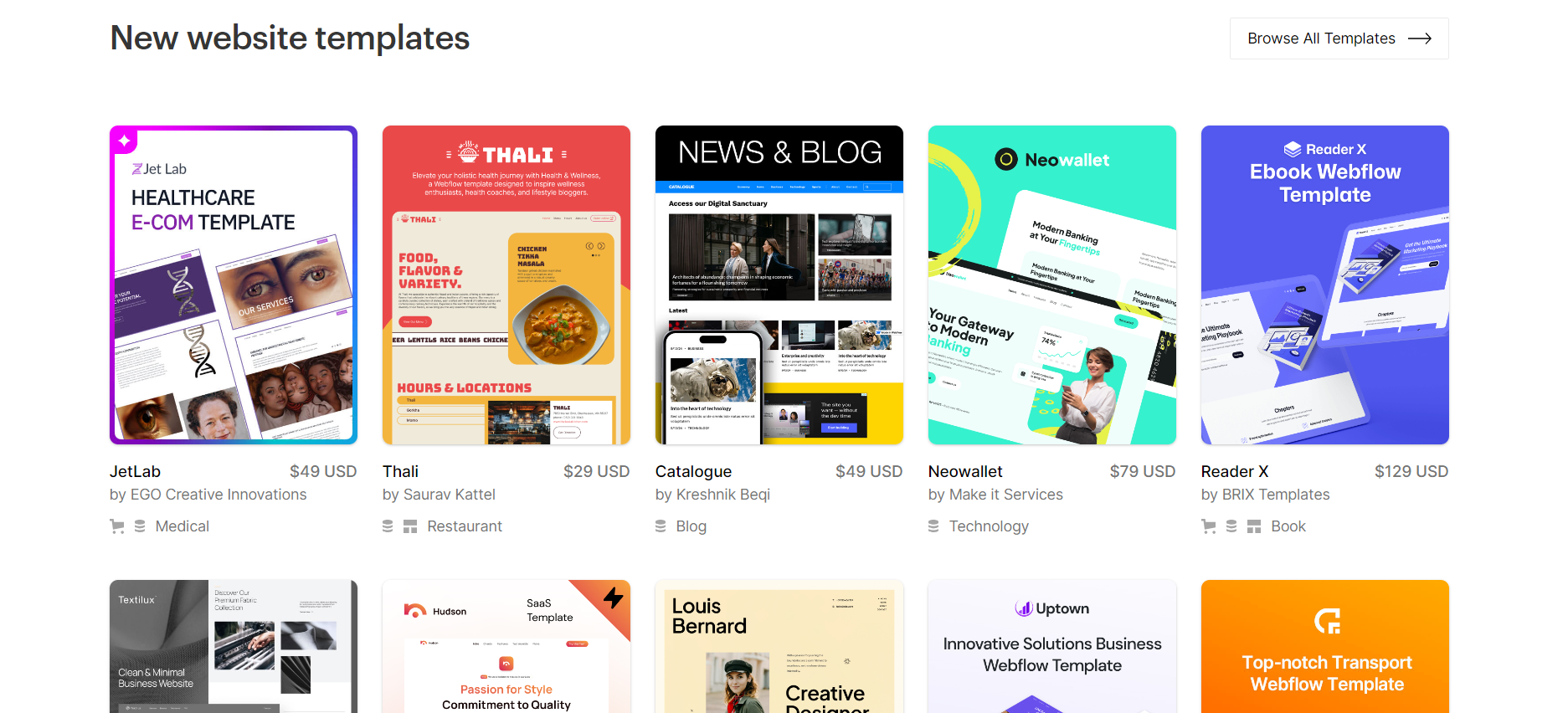
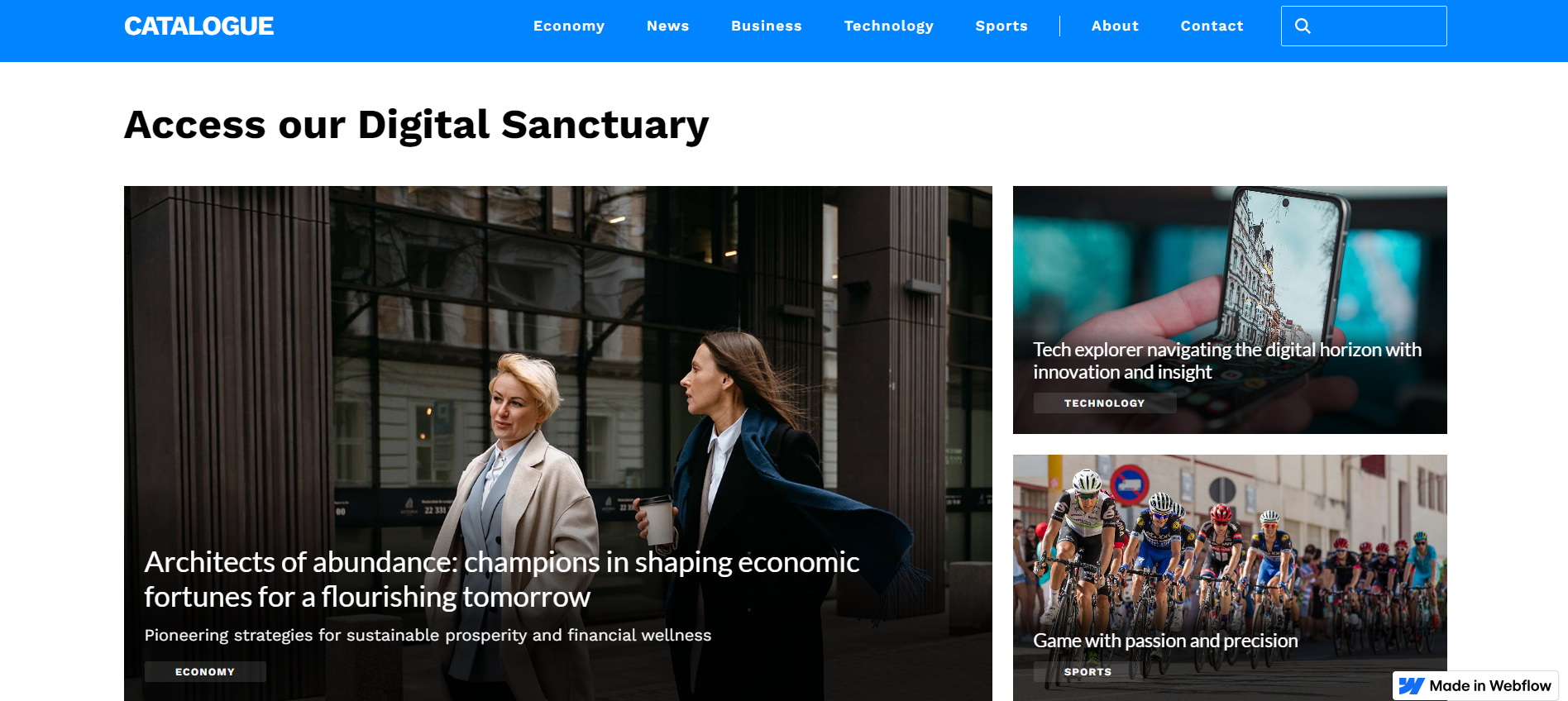
Compared to Webflow, Jimdo offers a diverse range of templates suitable for various industries and user preferences, with options to preview and select templates easily. The platform allows flexibility in changing templates for existing websites and also provides a “Blank Template” for custom designs, catering to both beginners and advanced users.
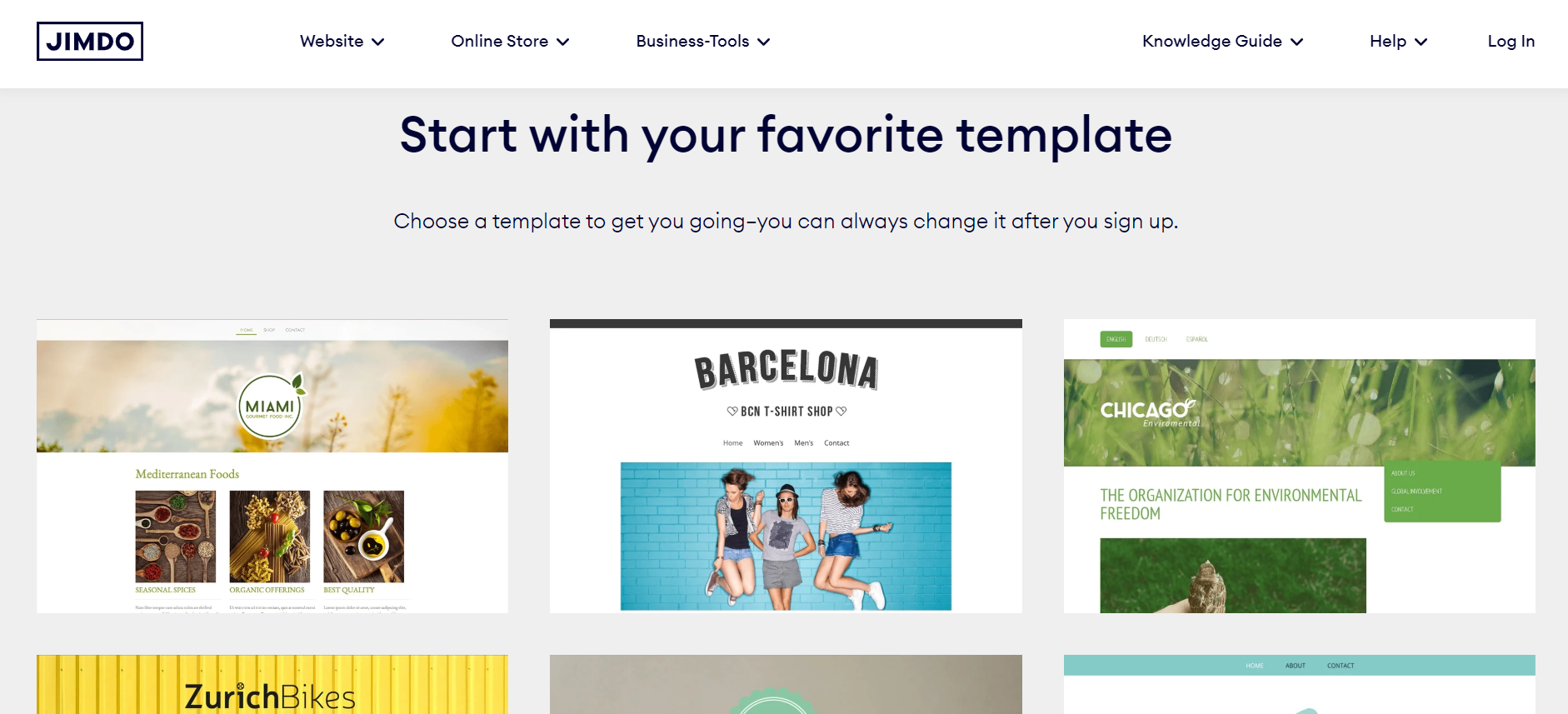
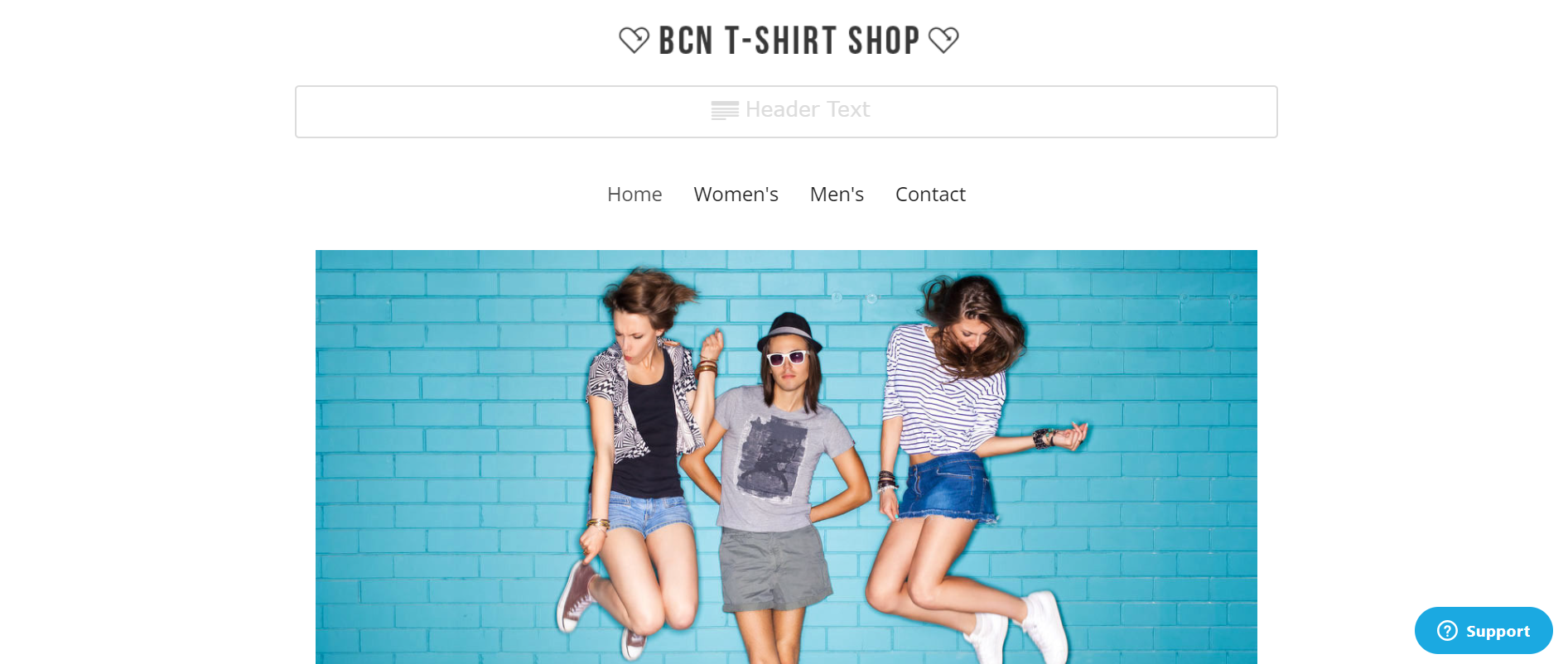
Get a head start on website creation with AI
Create a custom website tailored to your business needs 10X faster with 10Web AI Website Builder!
Ease of use
Ease of useReflects the platform’s overall user-friendliness.Score
Components:
- Learning curve (40%): Quickness and ease of getting started.
- Interface design (30%): Simplicity and intuitiveness of layout.
- User guidance (20%): Quality of tutorials and support.
- Flexibility (10%): Adaptability to various user skills.
 7.5
7.5
 8.0
8.0
🏆 Winner: Jimdo
. With a score of 8.0, Jimdo is praised for its ease of use, particularly for beginners, thanks to its AI-driven website builder, Jimdo Dolphin, which simplifies the design process. Webflow, scoring 7.5, is user-friendly for experienced designers and developers, but beginners may find it challenging due to a steeper learning curve.
Learning Resources
🏆 Winner: Webflow
. Webflow offers a comprehensive set of learning resources for individuals seeking proficiency in the platform. Webflow University serves as an excellent starting point, delivering diverse courses and tutorials covering fundamental to advanced aspects of Webflow. On the other hand, Jimdo offers user-friendly learning resources and tools that cater to both beginners and those with some experience in website design.
For ecommerce
EcommerceMeasures the platform’s effectiveness in supporting online business activities.Score Components:
- Ecommerce themes and templates (20%): Variety and design of templates.
- Product management (25%): Ease of managing and organizing products.
- Payment options (25%): Variety and convenience of payment methods.
- Ecommerce features (20%): Features for managing an ecommerce store.
- Integration (10%): Compatibility with external e-commerce tools and services.
 8.5
8.5
 7.0
7.0
Webflow and Jimdo both offer ecommerce capabilities, but they cater to different needs. Webflow is a robust platform for creating online stores, offering comprehensive ecommerce features such as easy store creation without coding, extensive customization options, product management with variations, inventory tracking, integration with major payment gateways, automated shipping calculations, tax configuration, and marketing tools like abandoned cart recovery and email marketing. Jimdo, on the other hand, simplifies the process of launching an online store by providing built-in ecommerce features. With an intuitive drag-and-drop interface, users can effortlessly design a professional storefront without coding.

|

|
|
|---|---|---|
|
Ecommerce themes and templates |
7.5 |
6.5 |
|
Product page customization |
8.3 |
6.8 |
|
Payment processing and commissions |
7.8 |
7.5 |
|
POS capabilities |
6.5 |
5.0 |
|
Payment gateways |
8.0 |
7.0 |
|
Product numbers |
7.0 |
6.0 |
|
Additional ecommerce features |
7.9 |
6.5 |
Webflow ecommerce features:
- Checkout and Payment Processing with Stripe, PayPal, etc.
- Marketing and Promotions
- Tax and Shipping calculations
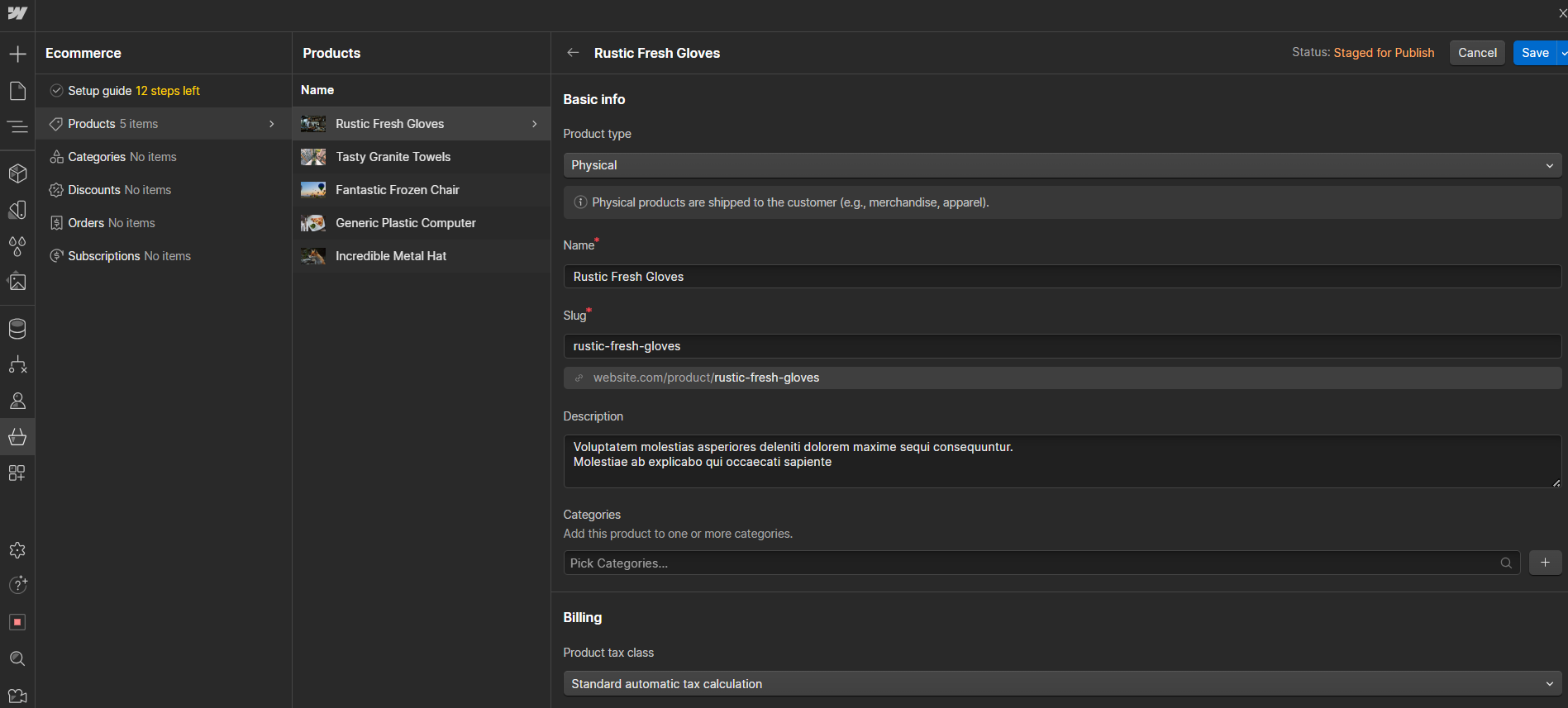
Jimdo ecommerce features:
- Product details and variations
- Inventory tracking
- No transaction fees
- Discount codes and promotions
- Email marketing
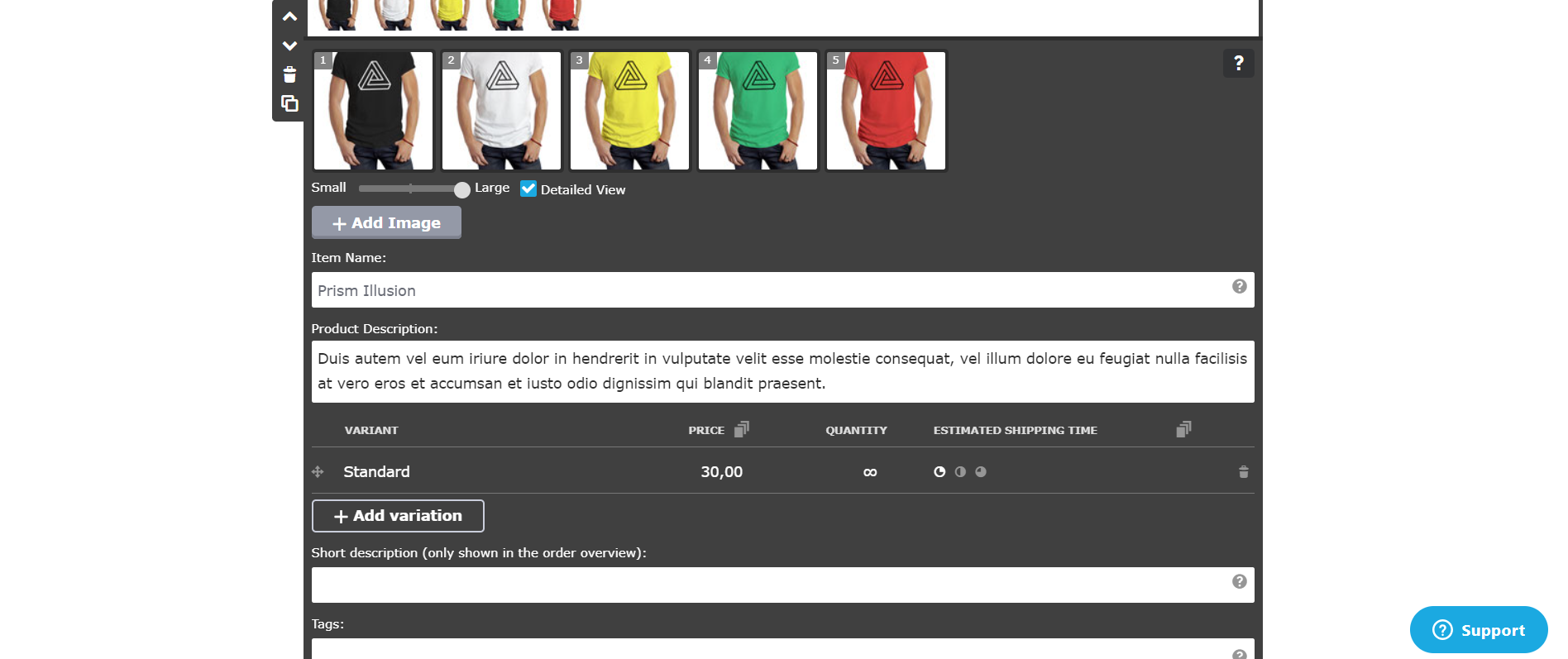
Ecommerce themes & templates
Webflow offers a diverse range of ecommerce themes and templates designed to cater to various types of online stores, from fashion and technology to artisan crafts and children’s products. Each template comes equipped with built-in ecommerce functionality, allowing you to easily add products and manage your store without the need for coding. Jimdo’s ecommerce templates offer a diverse range of pre-designed themes, ensuring a mobile-friendly and smooth shopping experience. The drag-and-drop interface allows for easy customization of colors, fonts, and layouts, while templates focus on showcasing products with dedicated sections for images, descriptions, and clear calls to action.
Product page customization
Webflow offers extensive customization options for eCommerce product pages, allowing users to design and personalize their pages without coding. It provides tutorials for creating product pages from scratch, offers responsive templates for various devices, and allows users to add custom code and dynamic content using Webflow’s CMS for maximum customization flexibility. Customizing a product page on Jimdo involves using its user-friendly interface to personalize various elements. You can edit text, add images, adjust layouts, and modify design elements like colors and fonts to showcase your products effectively.
Payment processing
Webflow provides a flexible and secure platform for payment processing and ecommerce through integrations with leading payment gateways like Stripe and PayPal. This allows users to accept a wide range of payments, including credit card transactions directly from their websites. Jimdo facilitates payment processing through various popular gateways like PayPal, Stripe, Mollie, and more, depending on your location and plan. While Jimdo doesn’t impose transaction fees, individual payment gateways may have their own charges, typically ranging from 2% to 3% of the transaction amount plus a fixed fee.
Website Editors
Website EditorsEvaluates the platforms’ website building and editing capabilities.Score Components:
- Customization tools (40%): Range and power of editing features.
- Editor usability (30%): User experience within the editor.
- Design flexibility (20%): Freedom in layout and design changes.
- Update and maintenance ease (10%): Simplicity of updating and maintaining the site.
 9.0
9.0
 7.8
7.8
🏆
Winner: Webflow
. With a score of 9.0, Webflow’s editor is praised for its intuitive visual interface that simplifies the process of designing and editing responsive websites without requiring deep technical knowledge. It offers a perfect blend of ease of use for beginners and the flexibility for more advanced users, enabling significant cost savings by allowing users to customize and manage their sites without hiring professionals.
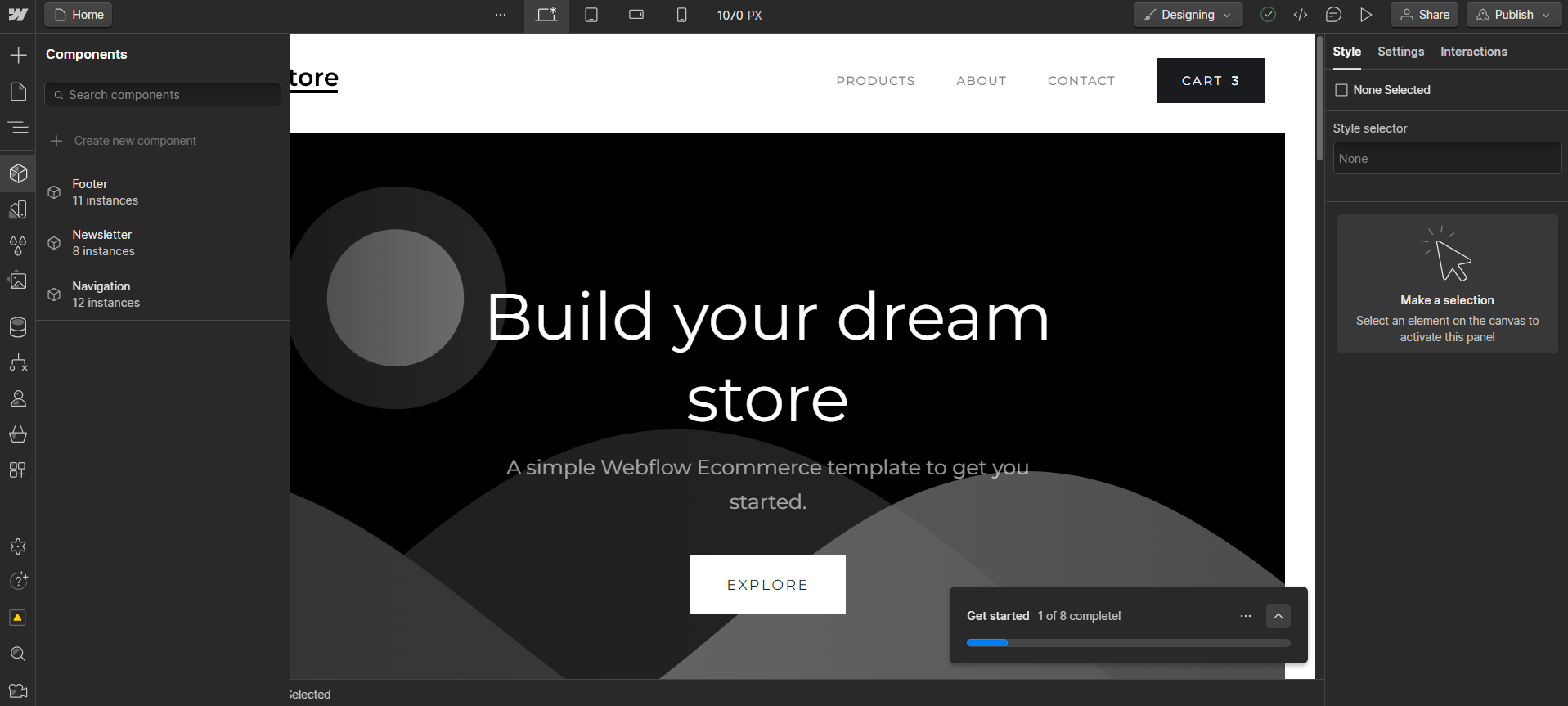
Jimdo’s editor, scoring 7.8, is designed to accommodate both novice and experienced users through its two main modes: Jimdo Dolphin and Jimdo Creator. Dolphin, an AI-driven tool, is ideal for beginners and creates websites based on user responses to a series of questions, streamlining the web design process. On the other hand, Jimdo Creator provides a more traditional website building experience with greater customization options, including a drag-and-drop editor and HTML widgets, catering to users seeking more control over their site’s design.
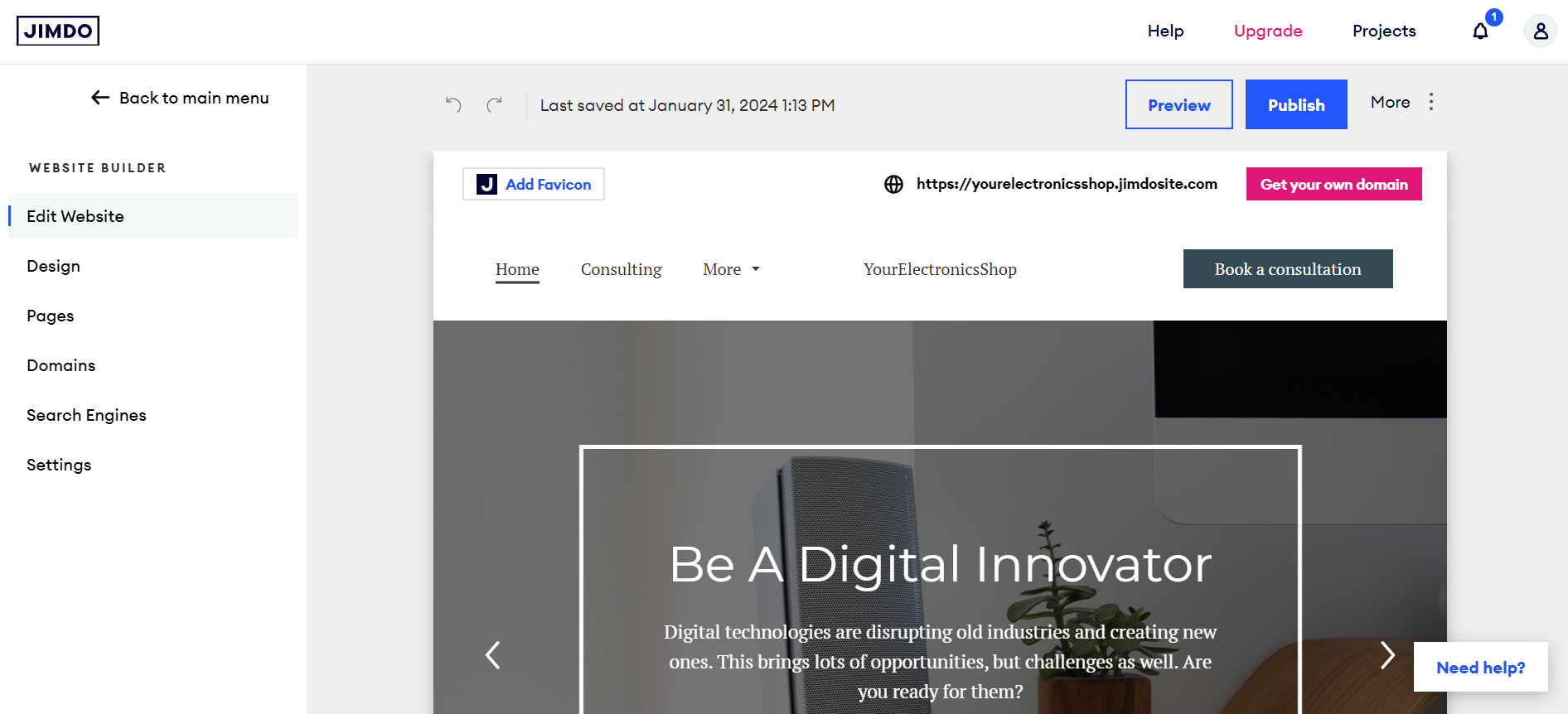
Mobile editor/app
 7.0
7.0
 8.0
8.0
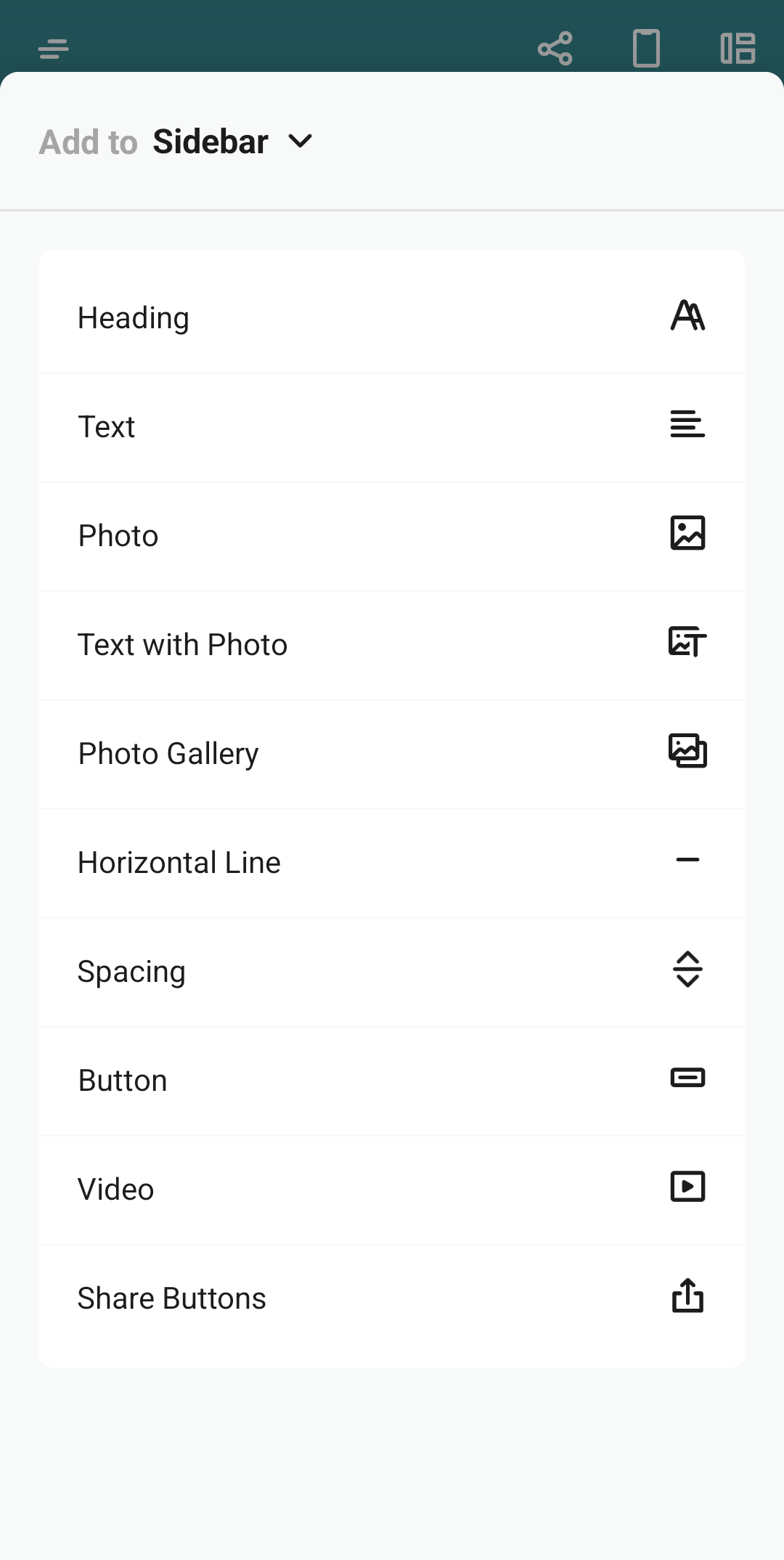
🏆
Winner: Jimdo
. Both Webflow and Jimdo offer mobile editing capabilities, but they cater to different needs and skill levels. Webflow does not have an official mobile editor app, but there is a third-party app called EditFlow, created by a community member for Webflow users. However, this app is only available for iOS.
On the other hand, Jimdo offers a mobile editor app, allowing users to create and manage their websites directly from their smartphones or tablets. This app provides a convenient way to edit and update your site on the go, including adding or modifying content, adjusting design elements, and managing your online store.
In summary, Jimdo receives a higher rating due to its official mobile editor app that offers a wide range of editing capabilities and is accessible to all users, regardless of their device’s operating system.
Product testing options
Product Testing OptionsAssesses the options for trying out platform features before commitment.Score Components:
- Trial quality (40%): Extent and usefulness of the trial or free version.
- Feature accessibility (30%): How many features are available to test.
- Trial duration (20%): Length of the trial period.
- Ease of transition (10%): Smoothness of moving from trial to paid plans.
 6.3
6.3
 6.4
6.4
Overall Result
:
Jimdo wins
. Jimdo scores slightly higher than Webflow with a score of 6.4 compared to Webflow’s 6.3. Both platforms offer a free version with basic features. However, Jimdo stands out by offering a 14-day money-back guarantee for all paid plans, allowing users to test more advanced features with less risk. Webflow, on the other hand, does not offer a trial version or a money-back guarantee.

|

|
|
|---|---|---|
|
Free Plan |
Yes | Yes |
|
Trial Duration |
No |
No (14-day money-back guarantee) |
|
Testing Premium Features |
Basic features with free plan |
Basic features with free plan, advanced features with paid plans (14-day money-back guarantee) |
|
Money Back Guarantee |
No |
Yes (14 days for all paid plans) |
Price
PriceLooks at the cost-effectiveness and value for money of each platform.Score Components:
- Plan value (40%): What each pricing tier offers.
- Transparency and clarity (30%): Clearness of pricing structures.
- Flexibility of plans (20%): Range of options to suit different budgets.
- Hidden costs (10%): Additional expenses not included in the plan.
 8.0
8.0
 7.5
7.5
Webflow and Jimdo offer a range of pricing plans to cater to different needs, with Webflow scoring slightly higher in terms of price.

|

|
|
|---|---|---|
|
Free |
Starter (Free): Limited features for new sites, including 2 static pages and 50 form submissions lifetime. |
Play ($0/month): Basic, entry-level plan offering limited features, ideal for testing Jimdo’s capabilities. Includes 500MB storage and up to 5 website pages. Limited ecommerce functionality. |
|
$0-$10 |
No offering at this amount. |
Start ($9/month): Aimed at small projects or businesses just starting out. Provides 5GB of storage and up to 10 website pages, along with SEO tools for online visibility. Not directly focused on ecommerce. Value for price: 6.0 |
|
$10-$17 |
Basic ($18/month): Suitable for simple sites with a custom domain, including basic SEO controls and 500 monthly form submissions. And 100 pages. Value for price: 6.5 |
Business ($19/month): Designed for small to medium-sized online stores, offering ecommerce features without transaction fees. Includes selling on Facebook and Instagram, and various payment options. And up to 50 website pages. Value for price: 8.0 |
|
$17-$30 |
CMS ($29/month): For content-driven sites with 2,000 CMS items, 1,000 monthly form submissions, and full API access. And 150 website pages. Value for price: 7.5 |
Grow ($15/month): Targets growing businesses needing more space and features. Offers more flexibility but still lacks dedicated ecommerce capabilities compared to the Business plan. Provides 20GB bandwidth with up to 50 website pages. Value for price: 7.0 Basic ($15/month): Up to five forwarding email addresses, up to 10 website pages, convenient payment methods. Value for price: 6.5 |
|
$30-$45 |
Standard ($42/month): For new businesses with up to 500 ecommerce items, includes basic ecommerce features, and 2% transaction fee Value for price: 8.5 |
VIP ($39/month): Provides comprehensive features for large or expanding online stores, including unlimited storage and priority support and unlimited website pages. Includes professional design review and no transaction fees. Value for price: 9.0 Unlimited ($39/month): Offers unlimited bandwidth and storage, up to 20 forwarding email addresses and unlimited website pages. Includes priority support and professional design reviews. Value for price: 9.5 |
|
$45-$50 |
Business ($49/month): High traffic capacity, advanced features like site search, and up to 10 content editors. Value for price: 8.0 |
No offering at this amount. |
|
$80-$90 |
Plus ($84/month): Higher volume businesses with 0% transaction fees, up to 5,000 ecommerce items, and advanced features. Value for price: 9.0 |
No offering at this amount. |
|
$200+ |
Advanced ($235/month): Scalable solution for large online stores with up to 15,000 ecommerce items and the highest caps and 0% transaction fees. Value for price: 9.5 |
No offering at this amount. |
location. As a result in rare cases the prices displayed here can differ from the ones you see on their
websites.
Hosting quality
Hosting
qualityExamines the reliability and performance of the hosting solutions.Score Components:
- Uptime (40%): Consistency and reliability of website availability.
- Speed (30%): Loading times and performance.
- Bandwidth and storage (20%): Sufficiency of resources provided.
- Data centers (10%): Quality and distribution of hosting infrastructure.
 8.9
8.9
 6.7
6.7
🏆
Winner: Webflow
Webflow offers managed hosting with a 99.99% uptime, and it leverages a globally distributed network of data centers from Amazon Web Services (AWS) and Fastly. Jimdo, on the other hand, offers shared, cloud, and managed hosting with a 99.5% uptime, and it utilizes a distributed network of highly secure and reliable facilities spread across multiple regions. Despite Jimdo’s diverse hosting options, Webflow’s superior uptime and use of renowned data centers give it the edge in this category.

|

|
|
|---|---|---|
|
Do they offer hosting? |
Yes, included in all paid plans |
Yes, included in all paid plans |
|
Data Centers: |
Webflow doesn’t actually have its own data centers. Instead, it relies on a globally distributed network of data centers from Amazon Web Services (AWS) and Fastly |
While Jimdo doesn’t publicly disclose the exact locations of its data centers, they utilize a distributed network of highly secure and reliable facilities spread across multiple regions |
|
Type of hosting: |
Managed Hosting |
Shared Hosting, Cloud Hosting, Managed Hosting |
|
Uptime: |
99.99% |
99.5% |
|
Uptime Guarantee: |
Only Enterprise plan, 99.99% |
No |
Website Speed Optimization
Website Speed OptimizationEvaluates optimization of website loading timesScore Components:
- PageSpeed Score (30%): Google’s score indicating performance optimization.
- Loading Time (30%): The average time until a website is fully interactive.
- Mobile Optimization (15%): Optimization effectiveness for mobile devices.
- Resource Optimization (15%): Optimizing images, scripts, and other heavy resources.
- CDN Usage (10%): Use of CDN to enhance speed across geolocations.
 8.1
8.1
 7.6
7.6
🏆 Winner: Webflow
Both Webflow and Jimdo prioritize website performance and page speed, with Webflow focusing on custom cache settings, custom element lazy loading, automatic minification, responsive templates, and CDN, and Jimdo emphasizing content optimization, CDN, image optimization, caching, and mobile responsive design. However, Webflow has a slightly higher Website Speed Optimization score.

|

|
|
|---|---|---|
|
Focus |
Custom Cache Settings, Custom Element Lazy Loading, Automatic Minification, Responsive templates, CDN |
Content Optimization, CDN, Image optimization, Caching, Mobile Responsive design |
|
Performance Tools |
Google Lighthouse, PageSpeed Insights |
Google PageSpeed Insights Integration |
|
Key Strategies |
Custom Cache Settings, Custom Element Lazy Loading, Automatic Minification, Responsive templates, CDN |
Content Optimization, CDN, Image optimization, Caching, Mobile Responsive design |
|
Load Times |
Below 2 seconds average |
Varies widely, dependent on optimization |
|
Page Speed Scores Range |
77.2/100 |
Scores vary; influenced by plugins, images |
|
Core Web Vitals Improvement |
Improving components’ usability, and emphasis on LCP, FID and CLS |
Optimizing LCP, Enhancing FID, Improving CLS |
Webflow’s approach to enhancing site speed includes custom cache settings, custom element lazy loading, automatic minification, responsive templates, and CDN. This approach leverages Webflow’s fast servers and CDN network to boost load speed. Webflow also focuses on improving components’ usability and emphasizes on Largest Contentful Paint (LCP), First Input Delay (FID), and Cumulative Layout Shift (CLS). The average load time for Webflow websites is below 2 seconds, and the average PageSpeed score is 77.2/100.
Jimdo, like Webflow, places a strong emphasis on website performance and page speed. Jimdo’s approach to enhancing site speed includes content optimization, CDN, image optimization, caching, and mobile responsive design. Jimdo also focuses on optimizing LCP, enhancing FID, and improving CLS. However, the load times and PageSpeed scores for Jimdo websites vary widely, depending on optimization.
Get a head start on website creation with AI
Create a custom website tailored to your business needs 10X faster with 10Web AI Website Builder!
Plugins and integrations
Plugins and integrationsMeasures the range and effectiveness of additional plugins and integrations.Score Components:
- Variety of options (40%): Range of available add-ons.
- Integration smoothness (30%): Ease of integrating plugins into the site.
- Quality of plugins (20%): Functionality and reliability of the options.
- Custom integration capabilities (10%): Support for custom or third-party integrations.
 5.5
5.5
 7.4
7.4
🏆 Winner: Jimdo.
With a score of 7.4, Jimdo leads in this category. It offers a range of plugins and extensions, with major providers like POWr and Elfsight offering free plugins and widgets. These tools enhance website functionality and cater to diverse business and marketing needs. On the other hand, Webflow, with a score of 5.5, doesn’t have plugins or extensions in the traditional sense. Instead, it offers a built-in library of website elements and functionalities and integrates with a number of third-party services and tools.
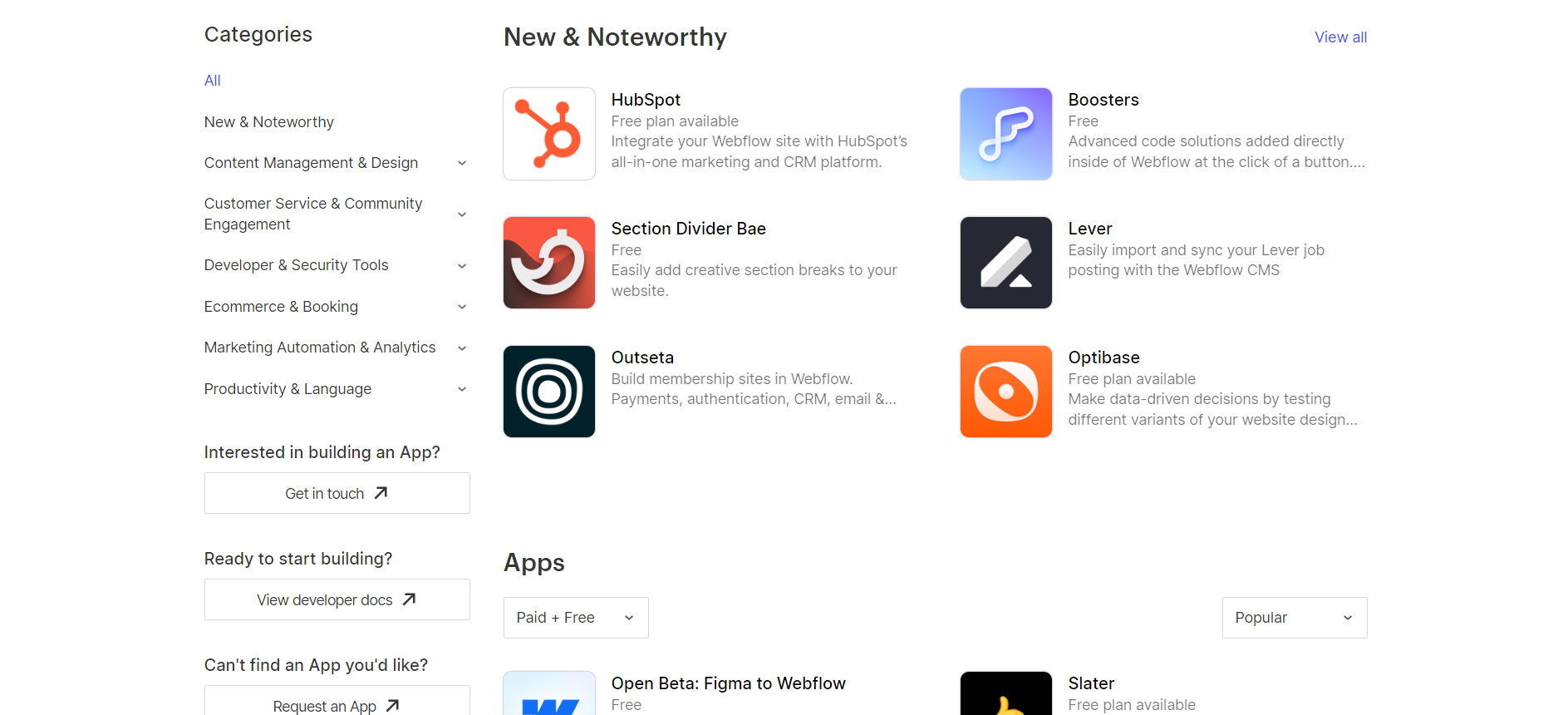
Marketing Features
Design FunctionalitiesRepresents how well each platform allows for creative design and customization of websites.Score Components:
- Template Variety (30%): Range and quality of design templates.
- Customization (30%): Flexibility and options for design alterations.
- User Interface (20%): Ease and intuitiveness of the design process.
- Responsiveness (10%): Adaptability to different devices and screen sizes.
- Innovation (10%): Unique design features and tools.
 7.8
7.8
 7.2
7.2
🏆
Overall Winner: Webflow
. Webflow stands out for its more advanced design tools, flexible CMS, and top-tier hosting services. Jimdo is strong in its simplicity and ease of use, ideal for individuals and small businesses.

|

|
|
|---|---|---|
|
SEO Tools |
|
|
|
Email Marketing |
|
|
|
Blogging |
|
|
|
Social Media Integration |
Simplifies content sharing and audience engagement on major social platforms |
Integration features for various social media platforms |
|
Analytics and Reporting |
Integrates with Google Analytics for comprehensive web traffic and behavior analysis |
Integrated analytics for monitoring website traffic |
|
Ads and Promotions |
Supports ad and promotion management through integration with platforms like Google Optimize |
Tools and features for promotions, but detailed ad management may require external services |
Customer Support
Customer supportEvaluates the quality and availability of support options.Score Components:
- Response time (40%): Speed of support responses.
- Support quality (30%): Effectiveness and helpfulness of the support.
- Availability (20%): Range of support channels (phone, chat, email).
- Resource richness (10%): Quality of self-help and educational materials.
 8.3
8.3
 6.8
6.8
🏆 Winner: Webflow
. In the Webflow vs Jimdo comparison, Webflow takes the lead with a customer support score of 8.3. Webflow offers 24/7 support through live chat, email, and a community forum, ensuring users can get help whenever they need it. Additionally, Webflow provides extensive documentation and video tutorials, making it easier for users to navigate the platform and resolve issues independently.
Jimdo, with a customer support score of 6.8, offers various support channels including email, a call center, and social media support. However, it lacks live chat support, which can be a significant drawback for users needing immediate assistance. Jimdo’s support options may vary based on the user’s plan, so it’s important to check their official support pages for the most accurate information.
Security
SecurityLooks at the platforms’ security measures and data protection.Score Components:
- Data protection (40%): Safeguards for user and customer data.
- SSL and encryption (30%): Implementation of secure connections.
- Compliance (20%): Adherence to industry security standards.
- Regular updates (10%): Frequency of security updates and patches.
 7.8
7.8
 8.3
8.3
🏆
Winner: Jimdo
. Jimdo takes the lead in security with a higher security score of 8.3 compared to Webflow’s 7.8. Jimdo’s commitment to data protection and GDPR compliance is evident in their use of AI for personalization without data training, IT security measures, and anonymized web analytics data. They also offer comprehensive website security measures, including a strong firewall, DDoS protection, and encryption for all traffic, messages, and emails.
Webflow also prioritizes user data privacy and security, implementing robust encryption techniques and strict access controls. They conduct regular updates and audits to address potential vulnerabilities. However, their security score and measures do not surpass those of Jimdo.
AI Capabilities
AI capabilitiesMeasures the effectiveness of AI-driven features and tools.Score Components:
- Automation efficiency (40%): Impact of AI on streamlining processes.
- Personalization (30%): AI-driven customization for users or customers.
- AI-Assisted design (20%): Role of AI in website design and functionality.
- Data analysis (10%): Use of AI in interpreting user data and analytics.
 8.3
8.3
 6.0
6.0

|

|
|
|---|---|---|
|
AI Builder |
|
Jimdo’s AI builder offers a simplified website creation process |
|
AI Ecommerce Features |
|
Basic AI-powered design suggestions for store layouts |
|
AI Content Generation |
|
|
|
Additional AI Features |
AI-powered design suggestions and content management announced |
AI-driven website layout generation |
🏆 Winner: Webflow
. Despite not having AI capabilities at the moment, Webflow’s score of 8.3 is higher than Jimdo’s 6.0. This is due to the promising AI features Webflow has announced, which include AI-powered design suggestions, content management, and a co-pilot for faster design creation.
Jimdo, on the other hand, offers a basic AI builder that simplifies the website creation process and provides AI-powered design suggestions for ecommerce store layouts. However, its AI capabilities are limited and not as advanced as the ones Webflow plans to introduce.
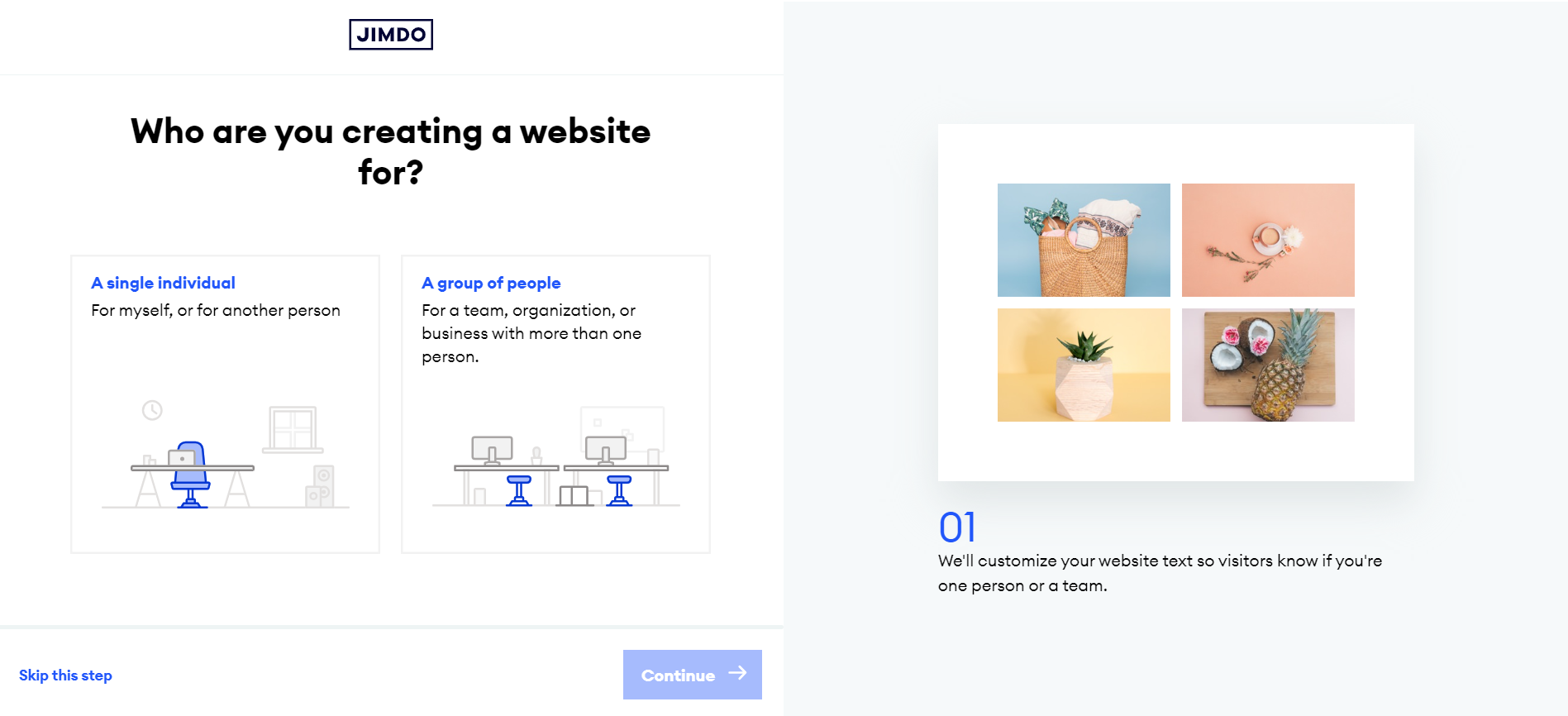
User Management
User ManagementAssesses the platforms’ capabilities in managing user roles, permissions, and accessibility.Score Components:
- Role Customization (40%): Flexibility in creating and defining user roles and
permissions. - Ease of Management (30%): User interface and tools for managing users.
- Access Control (20%): Effectiveness of access control measures for different user
levels. - Scalability (10%): Ability to manage a growing number of users efficiently.
 8.3
8.3
 5.8
5.8
🏆 Winner: Webflow
. Webflow and Jimdo offer different levels of user management capabilities.
- In Webflow, the number of users who can edit a website and their access levels vary by plan. Core, Growth, and Enterprise plans offer unlimited editors, while others limit content editors to 3 or 10 per site. Access levels include Designer for full access and Editor for content editing. Workspace roles like Admin, Designer, and Editor ensure collaboration and security through features like the Site Activity Log and role-based permissions.
- Jimdo’s Free, Start, and Basic Shop Plans allow website management by a single owner. The Grow Shop Plan permits two editors, including the account owner and one collaborator. The Business Plan extends collaboration to five editors, consisting of the account owner and four collaborators. The Unlimited Plan provides unlimited editors, fostering a collaborative team environment. The VIP Plan, designed for online stores, does not specify a limit on editors for websites.
Webflow User Roles and Access Levels:
| Role | Description | Access Highlights |
|---|---|---|
| Workspace Owner | Full control over Workspace settings and member management. | Edit settings, manage billing, access/edit all sites, invite/remove members, manage permissions. |
| Workspace Admin | Similar to the owner with some restrictions. | Edit settings, manage billing, access/edit all sites, invite/remove members (except owner), manage permissions. |
| Workspace Member | Limited control focused on site interaction. | Download invoices, access/edit sites, invite members. |
| Workspace Guest | Temporary collaborators with limited access. | Access/edit sites. |
| Workspace Commenter | Limited to commenting for feedback on sites. | Create/view/resolve comments, preview sites. |
| Site Admin | Full control at the site level. | Manage permissions, delete/transfer sites, billing management, design and publish changes. |
| Can Design | Design capabilities with some restrictions on publishing. | Design in Designer, create/modify classes and components, publish changes with permission. |
| Can Design (Limited) | Restricted design capabilities for Enterprise customers. | Create new classes, modify created classes, limited publishing capabilities. |
| Can Edit | Content editing without full design privileges. | Edit text/links/images, manage assets, publish Collection items and Ecommerce products. |
| Can Comment (Site Level) | Commenting for feedback at the site level. | Create/view/resolve comments, preview sites. |
Additional Features

|

|
|
|---|---|---|
|
SSL Certificate |
|
|
|
Custom Domain |
|
|
|
Free Custom Domain Included |
|
|
|
International Domains |
|
|
|
Mobile Responsive |
|
|
|
Page Speed |
|
|
|
Website Builder Mobile App |
|
|
|
Convert a Website To An App |
|
|
|
Website Analytics |
|
|
|
Multilingual Sites |
|
|
|
Multiple Users |
|
|
Webflow vs Jimdo: User Feedback
Webflow receives high praise for its user-friendly interface, eliminating the need for coding while offering extensive design flexibility. Users appreciate its scalability, cost-effectiveness, and seamless integration of essential features like forms and CMS. However, some users note a slight learning curve and occasional limitations, particularly in ecommerce functionalities and content management. Overall, Webflow proves to be a powerful tool for building and managing websites, offering robust features for both beginners and experienced developers, albeit with some room for improvement in certain areas like collaborative editing and content management.
Jimdo, a website builder platform, receives mixed reviews from users. Positive feedback highlights its ease of use, no-code editor, and quick website development for basic sites. However, criticisms include outdated design, limited templates, and concerns about pricing transparency. Some users appreciate it for simple projects, while others find it lacking for more complex websites. Common issues include restricted SEO in the free tier, support limitations, and late responses. The overall impression suggests Jimdo may suit beginners but could be less ideal for those seeking advanced features or modern designs.
The making of this blog
We followed a clear, step-by-step process to write and research this article.
Webflow vs Jimdo: FAQ
Which platform is better for professional designers, Webflow or Jimdo?
Can I use Jimdo for creating an ecommerce website?
How do Webflow and Jimdo compare in terms of ease of use?
Which platform offers better customer support, Webflow or Jimdo?
Are there any significant differences in the hosting quality between Webflow and Jimdo?
Which platform is better for integrating plugins and extensions?
How do Webflow and Jimdo handle website security?










